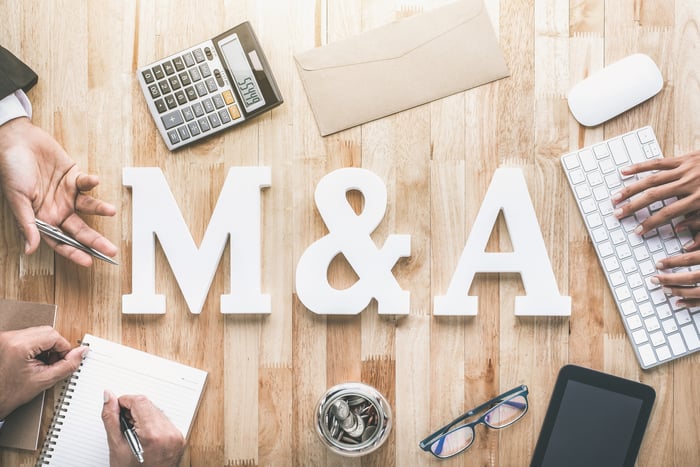What happened
Shares of Hydrofarm Holdings (HYFM 0.23%), a maker of hydroponic plant growing supplies and equipment, dropped by as much as 15% on April 27. That's not shocking, given the pair of news releases the company issued after the close on April 26. Here's a quick look at what put investors in a selling mood.
So what
First, some good news. When Hydrofarm eventually reports first-quarter earnings, the top line is projected to expand by 65%, with net income going from a loss to a profit. The only problem is that this news came in the same release as the announcement that Hydrofarm will be acquiring Field 16, a maker of plant nutrition products. Although Hydrofarm expects the transaction to be accretive to earnings in 2021, investors often sell the shares of companies that are buying others because of the cost of such transactions. In this case, Hydrofarm is paying up to $78.1 million, including an earnout payment of as much as $2.5 million.

Image source: Getty Images.
The second negative is the way in which Hydrofarm expects to pay for the purchase of Field 16. It will use cash on hand, some capacity on its credit facility, and the issuance of stock. That brings up the other news release yesterday: Hydrofarm announced that it's selling 4 million shares of stock, and the underwriters have the right to increase that figure by as much as 600,000. The goal is to raise at least $15 million to put toward the acquisition. Stock sales dilute current shareholders, and even when they're used for acquisitions, investors frequently see them as a negative.
Now what
Hydrofarm has been public for a very short time, having held its initial public offering last December. And although it's projecting solid revenue and net income growth for the first quarter, there's not a lot of history to go on here. Add an acquisition to the mix, and things get even murkier. Hydrofarm hits on the broader marijuana theme, which may excite some people, but it might make sense for long-term investors to take a wait-and-see attitude until there's more financial data to work with.

